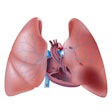Dear CT Insider,
The verdict is in: Coronary CT angiography is more efficient for triaging patients with chest pain than traditional care, according to the results of the long-awaited Rule Out Myocardial Ischemia/Infarction Using Computer Assisted Tomography (ROMICAT) II study published yesterday in the New England Journal of Medicine.
CT got patients home faster, and despite the fast turnaround, not a single patient experienced an adverse event after being discharged. Find out more here.
Also, thanks to increasing use of prospective electrocardiogram triggering and reduced kV settings in the past few years, the radiation dose for coronary CT angiography has been dropping steadily. To keep the downward trend on track, researchers from the University of Brisbane in Australia have another great dose-reduction tip. Find out why they see aggressive heart-rate control as a critical tool for reducing dose and improving image quality in large numbers of patients in this issue's Insider Exclusive.
As doctors, patients, and the media continue to lavish attention on radiation dose, new tools are at least making it easier to record and track. An article by associate editor Cynthia E. Keen talks about a new CT dose extraction tool that works on scanners from multiple vendors. Click here for the rest of the story.
In kidney imaging, renal failure is no longer a deal breaker for CT angiography, according to a report from the University of Maryland. Using reduced kV and half the normal contrast dose, the group saw little in the way of contrast-induced nephropathy or even increased creatinine after the scan, but they did obtain information critical for patient management. Find out more here.
In advanced imaging, CT nanoparticles are coming along nicely for a variety of indications, according to a new report from David Cormode, PhD. Still, he says, progress toward routine human use might speed up if the tiny particles could be made of something cheaper than gold.
Another advanced tool getting plenty of attention is spectral imaging, which is improving image quality and reducing dose in abdominal applications, according to a report from Massachusetts. Learn more here.
Last but not least, California finally got its radiation-reporting bill, which became law with some minor changes this month, though not without some last-minute controversy over the reporting requirements. Now it's up to software developers to create dose-reporting applications to automate the process, as radiology watchers across the U.S. monitor implementation of the new law to see if it might serve as a national legislative model, a state model, or an unfortunate experiment.
Whatever happens, you know you'll find out about it here in your CT Digital Community. For the rest of the news in CT, we invite you to scroll down through the links below.



















